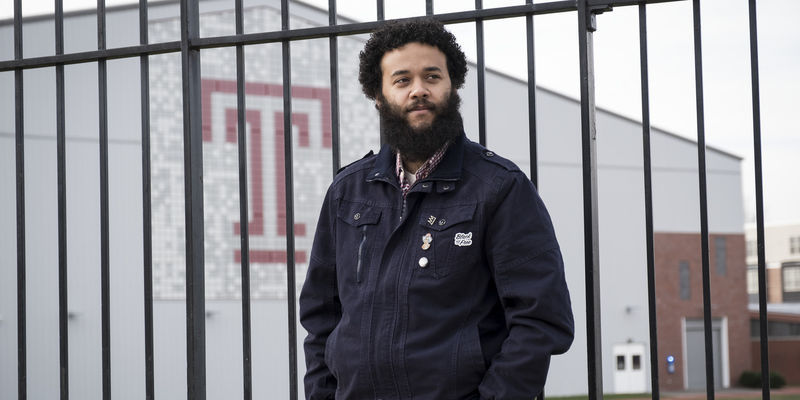New laws set to level collegiate playing field
Temple faculty member Thilo Kunkel discusses how name, image and likeness is set to be a game changer for the NCAA and its athletes

The game is about to change for the NCAA and college athletes.
In mid-June, the U.S. Supreme Court unanimously affirmed a ruling that impacts how college athletes are compensated. Schools can now provide their student-athletes with unlimited compensation as long as it connects to their education.
Then, on July 1, legislation went into effect in several other states, including Pennsylvania, that allows student-athletes to make money off of their name, image and likeness (NIL). Additional federal legislation is likely on the way, but in the meantime, the NCAA’s Division I Board of Directors approved an interim policy that makes every student-athlete in all 50 states eligible to profit off of their name, image and likeness regardless of whether or not their state has passed legislation.
The changes have been welcomed at Temple University as Acting Director of Athletics Fran Dunphy has said the Athletics Department plans to educate its student-athletes and help them navigate the name, image and likeness process.
Thilo Kunkel, an associate professor at Temple’s School of Sport, Tourism and Hospitality Management (STHM) and director of the school’s Sport Industry Research Center, has done extensive research on name, image and likeness and how it could affect college athletes. His Sport Management Review research paper, “There is no nil in NIL: Examining the social media value of student-athletes’ names, images, and likeness” found that the value lies with the individual athlete instead of the institution and that there is no difference between female and male athletes. His work has been cited in ESPN, USA Today, The Washington Post, The Columbus Dispatch and several other outlets.
We caught up with Kunkel to see just what’s at stake here for student-athletes with the NCAA landscape changing so rapidly.
Temple Now: Over the last few weeks, we have seen a lot of headlines regarding the NCAA and athlete compensation. How big of a deal is this that some states are now adopting name, image and likeness legislation?
Thilo Kunkel: This is like the phone going to the iPhone. This is the type of game changer that is going to change everything. Athletic departments need to rethink how they educate their student-athletes, how they support their student-athletes and how they use this to help recruit their student-athletes. And if they are not progressive, even if they are a top brand or university right now, they could be left behind.
TN: Tell us a little bit about the recent Supreme Court decision and what that means moving forward.
TK: It basically means that the NCAA cannot place restrictions on what athletic programs will be able to invest in their student-athletes. For instance, does that mean that I can give a student-athlete a laptop? Yes. Can I buy them a nice phone? Yes. I may be able to connect them with internships. If I am smart, I am doing all of these things. Universities will not actually pay them, but they can provide opportunities and help support their education. There is a lot of leeway over what is deemed educational, and this opens the door for a lot of recruitment opportunities. When athletic departments get innovative and think about students first, they can really get ahead with this. This is particularly important for schools in big areas with high commercial growth.
TN: Your name, image and likeness study has gained a lot of traction over the past several months. What were some of the findings?
TK: The NCAA’s main claim always was that the value lies within the institutions, but what our research has really shown is that the value really lies with the individual. Yes, the university or university brand has some influence on that; if you are the star quarterback of Alabama, you are getting more followers than a star quarterback at a lesser-known school but in general, the real value is with the individual.
The second claim that the NCAA has tried to hold onto is that male athletes would make all the money, and female athletes would be left behind. We found that there is no significant difference between male and female athletes. In fact, when we consider the median, we found that female athletes would be able to charge more than their male counterparts in terms of social influencer pricing. Football players and men’s basketball players are going to have the potential to make a big chunk here, but that’s true for some female athletes, too. We’ve seen athletes like Haley Cruse from Oregon or Nia Dennis from UCLA have social media following in the high six figures. Athletes like that essentially became millionaires overnight on July 1. Their job is now being themselves and being an influencer.
TN: How do you see this potentially helping minority student-athletes?
TK: I really think it helps level the playing field, and to an extent, it may even help keep some of these student-athletes in school. I am sure there was a star running back out there, who had to drop out of college because he needed to support his family back home. With better support or legislation like this in place, he probably could’ve been a superstar. So I really think it’s helping to level the playing field. It also might help keep athletes in school for all four years. If you’re making a nice supplemental income through your NIL, you might not immediately enter the NFL or NBA draft. Do I think this is part of the solution? Yes. Is it the solution? No. As a country, we still need to do a lot more, but this could certainly be helpful.
TN: This fall, you’re teaching the new STHM course Athlete Branding: Name, Image and Likeness. Tell us about that.
TK: The class is for anyone: STHM students, non-STHM students, student-athletes or just anyone interested in the topic. This is a course that gives students a broad overview of athlete branding since it’s become such a hot topic. For the athletes in the class, it will also specifically outline ways in which they can leverage their brand. How are they building their brand, how are they going to eventually monetize their brand and what do they need to keep in mind as they do it? Those are questions that we explore in detail throughout the course.


